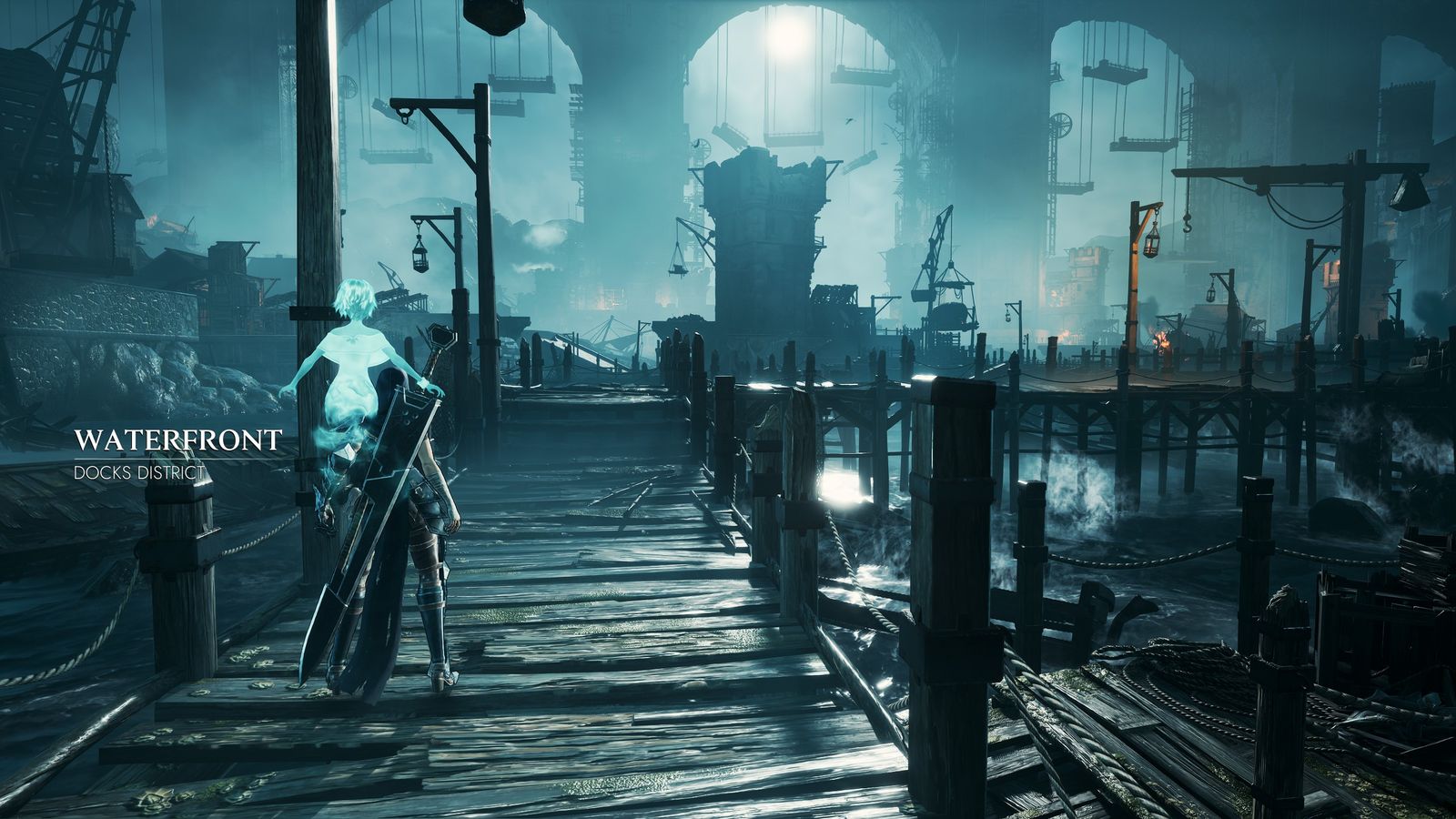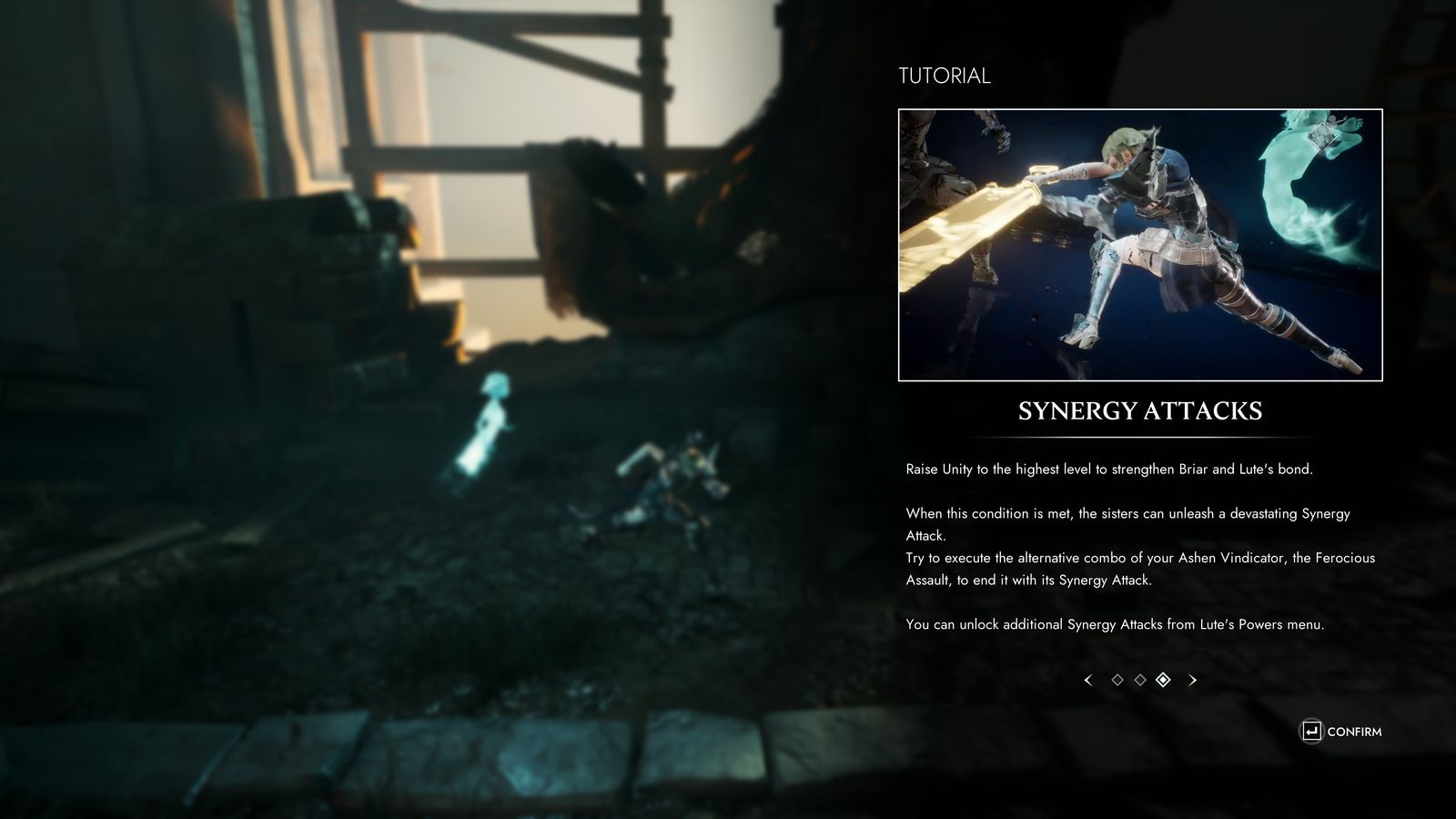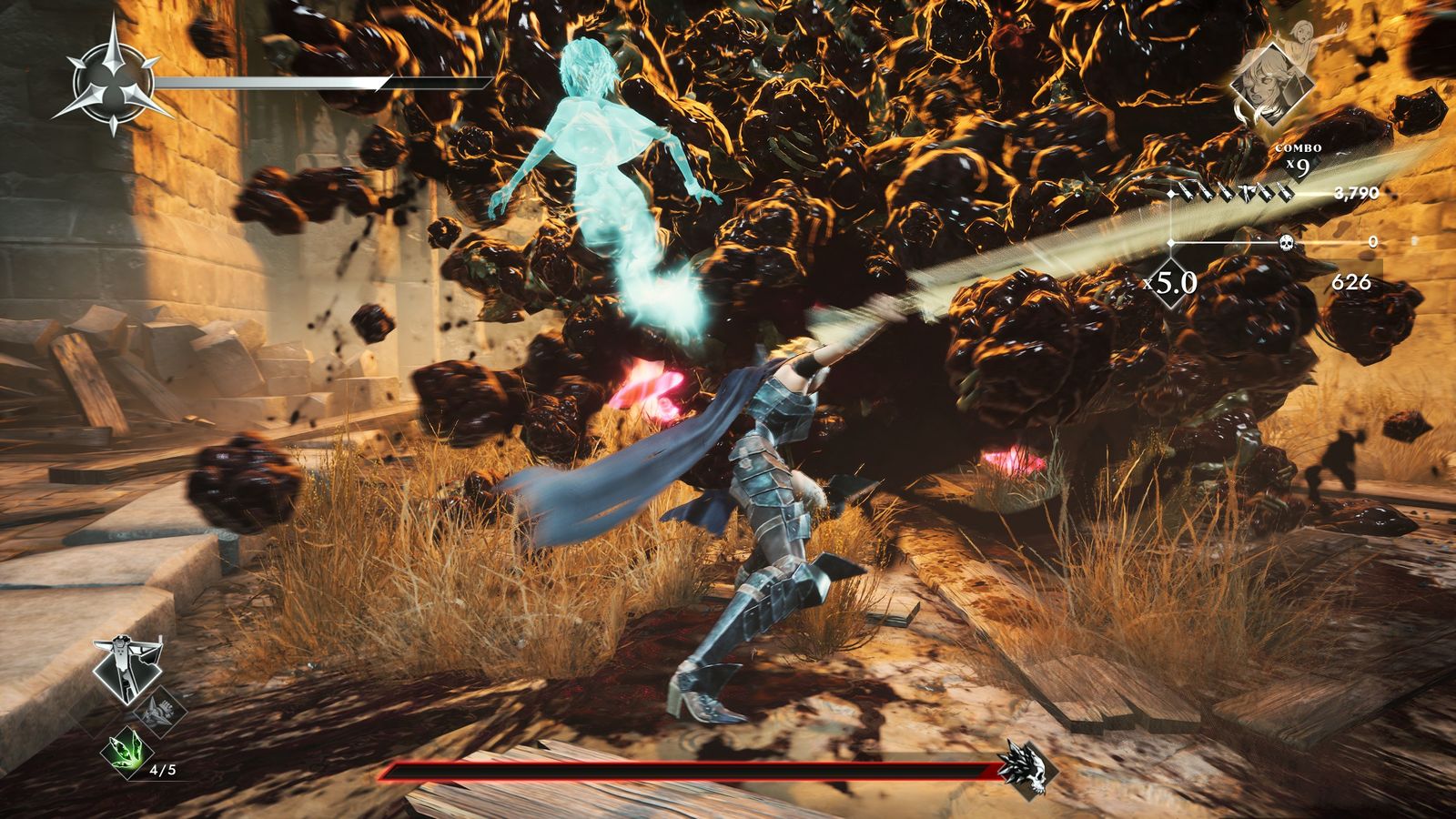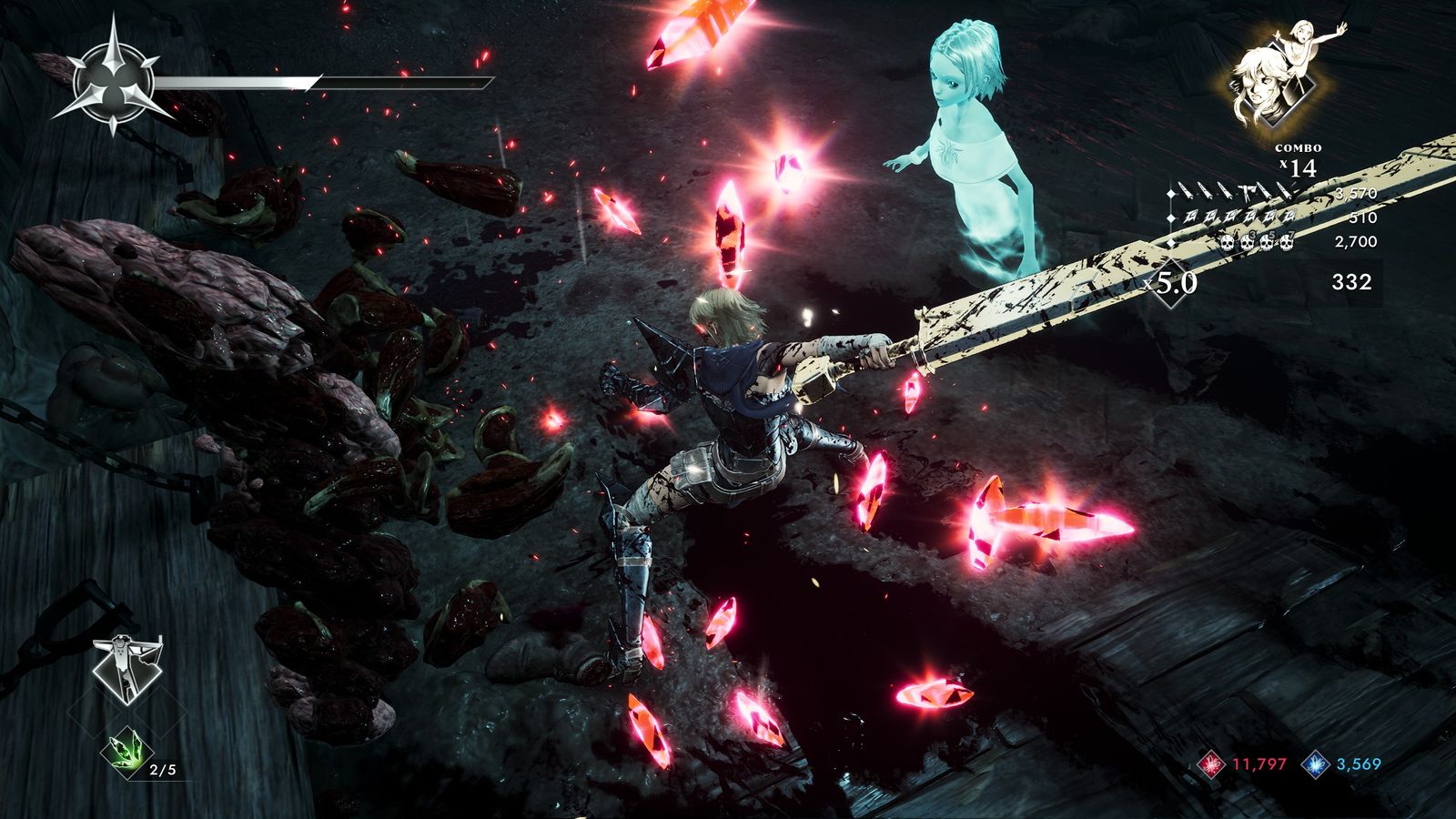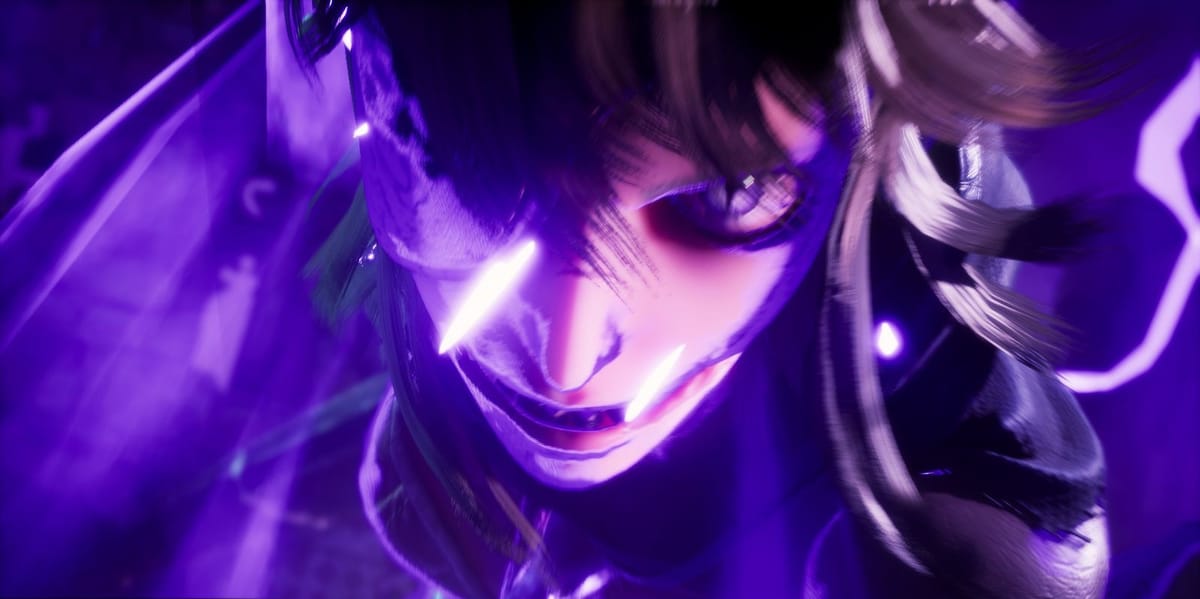
We can all agree that the hack and slash genre can be hit or miss. On the one hand you have God of War, which is just amazing. On the other, you get the unfortunate miss of Babylon’s Fall. Oof, that one’s not been taken too highly. I’m sure you’ve played a hack and slash at least once in your life, and you’ll have your favorites. You’d also know how refined this genre is, and how amazing and fun it can be. We all have our biases. For Soulstice, I walked into this one with that mentality. I mean, the trailers look great, but will it scratch that hack and slash itch that I’ve wanted for so long now?
Soulstice is just insane to grapple with. I’ll start with the story, which isn’t nearly as crazy as the rest of the game . You play as Briar, a Chimera whose soul is bonded to her sister Lute. The world you’re in is experiencing a cataclysmic incident, one that looks to destroy the fabric of reality, and you’re on a suicide mission to close this tear. Briar carries her sword, dubbed the Ashen Vindicator, and Lute uses magic to assist her sister in and out of battle. You’ve also no clue why you’re even on this mission, given that you’re two very inexperienced Chimeras, so you’ll want to prove yourself. SPOILER ALERT – As you progress through the story, you’ll come to learn that the Order that has given you this mission has not revealed the true reason for your operation. Several other Chimeras have also shown up to assist in the fight, all of whom you’ll eventually meet. Through your experiences with the other Chimera and Layton (an Observer for the Order), you’ll come to learn the reason for you turning into a Chimera, why no one else seems to be alive, and what’s causing the tear in the first place.
I’m trying not to spoil too much here. I mean, the story is really engaging. It’s full of mysteries, and it’s written so well that it feels like it’s encouraging you to participate in some detective work to figure out what the hell is going on. There are plenty of plot twists in each of its many chapters, all of which kept me wanting more and more as I sunk hour after hour into it. The story isn’t the only thing that’s well written either. The dialogue; every line was perfect and was delivered just as equally well. Pacing felt extremely fluid, and there weren’t any times when I felt bored or dejected. Everything here felt extremely suited to the dark world that’s been crafted.
Now I said that the story wasn’t nearly as crazy as the rest of the game. And really, no matter what you learn in the story it doesn’t even come close to the batsh*t insanity that is the gameplay.
Where do I even begin?
Soulstice’s gameplay is just nuts. There’s so much to juggle, so much to do and remember. The best way I can describe it is if I were to hand you a large box, with a single keyhole on one face. Each key I hand you is a chapter in Soulstice, and each time you open it you’ll uncover a new combo, skill, power, or passive ability. And the bag I’m holding that has all the keys in it? Yeah, well I’m dragging that on the floor. There are 25 chapters in Soulstice, but well over 100 new mechanics to explore throughout the 20 odd hours that it takes to finish this game.
Even for that completion time, it was so damn engaging that I felt like I had played it for 100 hours. It definitely takes a lot out of you, which is strange considering I never had that kind of experience with the likes of Red Dead Redemption 2 or Elden Ring — which I played for well over that 100-hour mark.
Now that’s not to warn you off from Soulstice, I’m just trying to prove a point here. I never expected that this new IP has a lot of mechanics in and out of the combat to master. Let’s start with Lute, who acts like a companion rather than something you can actively control. She has a lot of skills to uncover, all of which play towards your specific playstyle. You have two types of skills, one that assists with the overall game (i.e. allowing Lute to slow down time after a perfect counter). The other is the skills that determine what Rapture Class you’re in. Rapturing is something we’ll get to with Briar, but the class is the important keyword to remember here. I’m not sure if this was necessarily explained, it could be that I accidentally spammed through the helping guide, but this is where things get tricky. Some skills have a different pattern that they’re surrounded by — it could look like upside horns or a star — and these are all situated to one specific Rapture Class.
Each time you choose a skill with a weird pattern on it it will move you over to a certain class. Once I realized this I chose the Mastery class because of its extremely high damage, and reset my perks so I was only choosing skills that belonged to that class. I was really grateful to work that out because it constantly felt like I never had enough points to either unlock more skills or level Lute up.
Lute is extremely effective in and out of combat. In battle, she can be used to block and counter enemy moves, and will actively attack when she’s not been called on. She also has different fields, activated with the triggers on your controller, that must be used to attack certain types of enemies. Your normal set of enemies can be attacked whether or not you have a field activated, but if you want to hit the blue or red enemies you need to have their colored field active. There will be plenty of times when you’ll need to hot-switch these fields every few seconds so you can actively attack each type of enemy.
Now the same logic here can’t be applied to Briar, who exists on her own system entirely.
Briar’s abilities are leveled up the traditional way, just upgrading how much damage she can do or the type of combos she can use with her six types of weapons. But, she also has a few hidden tricks under her sleeve. To put it lightly, Soulstice encourages perfection. Through Briar and Lute’s bond, they can activate Unity, which only occurs once you successfully hit a certain number of attacks. Each time you get hit that Unity level will get reset. Now Unity is crazy; it lets you add on an extremely powerful attack at the end of a very specific combo, and it also lets you utilize Rapture. Think of it like good or evil, the easy or the hard. Unity is for the purist, those who don’t want to delve into the evil side of Briar’s Chimera condition. You can continually use your Unity special attack, just as long as you keep that combo up. But, if you get that bar up to max you can activate Rapture.
Rapture is the biggest plot point in Soulstice, and it’s something that the game actively encourages you not to use. You’ll remember that we mentioned Rapture classes before. Well, each class has its own type of special move that you can use after a set amount of time in Rapture. It’s supposedly extremely harmful to Briar, something that will boggle her mind and corrupt her soul after too many uses. But, other than a combat mechanic, it plays no other game-changing role. As much as the game might suggest that there are two types of endings that are determined per the ability you use the most (think RDR’s honor system), there really isn’t. That’s really my only major criticism of this game. It should very much reward players that don’t fall to the dark side and take the easy way out (like me) and encourage at least one more playthrough to get the true ending.
Now I’m probably missing 10 other things that you can experience with the gameplay, but it’s so vast that it’s easy to forget some things even exist. Soulstice is so busy with content that it might as well be two games in one. There are plenty of tricks the game will play on you while you explore the beautiful world and complete puzzles. I’m glad the level design is linear, at least it does that part for me — I just need to work out how to do everything else.
Other than the juggle-fest that’s the combat, everything outside of it is very, very basic. It seems that Reply Game Studios really put their all into the combat and story and realized that they needed to fill the off-time with things to do too — just to slow the player down and reset them every couple of fights. The puzzles the game offers you are extremely shallow, so much so it hurts to even call them puzzles — if anything, they’re time wasters. Other than that, there’s not much else to do. I wish I could interact with its world more than just puzzles or the odd plot device. I’d love it if I could learn about this world’s history or discover the backstory to each faction within the game through my own sense of wonder.
Now, this is where things get very subjective. This game, as hectic as it is, takes a few hours to master, and then it’s only a matter of maintaining the best combos to get the best score at the end of each level. That might be because I’m coming from the souls-like genre, but Soulstice is not difficult. On my playthrough I put on the Knight difficulty — the hardest difficulty the game has to offer on your first playthrough, and I probably died no more than 10 or 15 times through the game. I only found one boss battle midway through the game to be tough, but that was because of the amount of crap trying to attack me while I was whittling down the big guy’s health. The only other time outside a boss battle that I found tough was when I was towards the end of a chapter, had forgotten to resupply my health vials, and was facing 3 very damage-spongey enemies. I had to effectively do this as a no-hit run because there was no way in hell that I was gonna restart this chapter just because my dumb ass forgot to restock. Sure, the game does other things to ramp up the difficulty – like limiting the total amount of consumables the shop will sell, but even then you’ll rarely find yourself wishing you need to stock yourself up to max anyway.
Soulstice is a fantastic game, there’s no doubt about that. Sure, it had me wishing there was more to the puzzles, or that it was harder, but the amount of content to experience in both the combat and the story is insane. It’s like the devs have saved nothing for a sequel, just threw in absolutely everything bar the kitchen sink. And I, for one, am so glad they did. It was so satisfying to master the combat, to go through a battle in record time, and to receive a diamond ranking after a level. Once you hit your flow, Soulstice makes you feel like a god.
Soulstice
Great
Soulstice does an exceptional job of keeping the player engaged throughout its entirety. The amount of content just within the combat is jaw-dropping, so much so that it feels like Reply Game Studios aren’t saving anything for a sequel. There’s a lot to discover (and a lot to master) as you slowly trek through its massive world and uncover one of the most enjoyable detective-style stories that I’ve come to experience.
Pros
- Although a lot to master, the combat is fluid and extremely satisfying
- Enthralling detective story, with plenty of plot twists to keep you engaged
- Skill system lends itself perfectly to the replayability
Cons
- Not much to experience outside of combat
- Difficulty could be ramped up
- A choice system would've benefitted the plot direction

